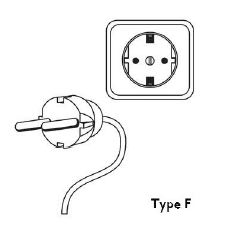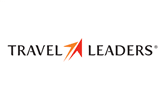ESTONIA

Fun Facts From Globus Tours
![]()
- Estonia gained independence from the Soviet Union in 1991.
- The first public Christmas tree in Estonia was placed in the old town square in Tallinn in 1441
- Estonia has the highest number of meteorite craters per land area in the world.
Estonia (population 1.3 million people, 25% of whom are Russian) is the smallest and most northern of the Baltic countries; its territory covers an area of 17,000 square miles. The climate is invigorating and changeable, and the landscape is a patchwork of forests and lakes. Deer and moose still roam the relatively flat, marshy land.
In 1987, Estonians went out into the streets and, in a gentle form of protest, sang their traditional, centuriesold songs. This “singing revolution” was a signal that they were ready for change. Since its independence in 1991, Estonia has rapidly moved away from its troubled Soviet past. It has reformed its political and economic institutions, becoming a model of success and earning the nickname “E-stonia.” The “Tiger of the Baltics” is a dynamic, vibrant nation with a significant European presence. It has been a member of the European Union since May 2004.
As well as having a forward-thinking mentality, Estonians also, strive to keep alive their traditions and are great lovers of poetry, cinema, and the arts. After Iceland, they are the most frequent theatergoers in the world. Tallinn’s charming Hanseatic Old Town is a World Heritage Site. They say it is here in the capital, on the Gulf of Finland, that the best Baltic food can be found; trout and herring dishes figure prominently, and hoogvein, a local mulled wine, is well worth trying.
VISAS, PASSPORTS, AND OTHER ENTRY REQUIREMENTS
Visas to Estonia are not required for US citizens. If you hold a passport from another country, please check with your local consulate about requirements for travel to Estonia. All passengers traveling internationally are required to have a passport. Please carry proper identification (your passport) on you and do not leave it in your suitcase or hotel room.
It is advisable to carry your passport with you at all times.
COUNTRY CODES
The country code for Estonia is 372. When calling to Estonia from overseas, dial your international access code (011 from the US/Canada), followed by the country code, area code, and phone number. Phone numbers in Estonia are seven digits in length. Dialing from the US/Canada: 011 372+### ####.
CURRENCY
The official currency of Estonia is the Euro.
Bank hours: 9:30 a.m. to 4:30 p.m., Monday through Friday.
1 EURO (€) = 100 Cents (c)
- Banknote denominations: €5, €10, €20, €50, €100, €200, €500
- Coin denominations: 1c, 2c, 5c, 10c, 20c, 50c, €1, €2
Euro coins differ according to country, but they can be used in any Eurozone state. Bank notes are of uniform EU design (depicting European architectural styles throughout seven ages, from Classical to Modern times).
For the most current exchange rates, please go to our website at Globusjourneys.com/Currency.
Credit cards are widely accepted in Estonia (mostly Visa and MasterCard), and you should have no issues using them. Signs posted at entrances of establishments should advise what forms of payment are accepted.
BUDGETING AND SHOPPING
The following budget guidelines are just approximate values or starting values for meals and are per person. Actual prices will vary widely by restaurant and city within a country but below are some averages as provided by our experienced personnel.
- The approximate cost of a soft drink/mineral water/coffee is €2-4.
- An average lunch consisting of a salad or sandwich and a soda or water starts at approximately €10-20.
- Dinner at a mid-range restaurant with dessert and a non-alcoholic beverage starts at approximately €20-40.
Shopping specialties: Baltic amber.
TIPPING
- Tipping is common in Estonia. A tip of 10% is usually acceptable at restaurants if it has not already been added to the bill.
- For taxis, tip 10% of the fare. “Keep the change” is a common expression.
- For hotel staff, €1-2 for room service is acceptable.
- A few coins in the local currency will be needed for public toilets.
ELECTRICITY AND ELECTRICAL OUTLETS
Outlets
Voltage for outlets is 230V. North American voltage is generally 110V. Therefore, you will need a converter for your travels. Adapters will be necessary to adapt your plug into the outlet, but these may not convert the voltage, so both devices are necessary. Estonia uses a round, 2-prong plug that looks like:

TEMPERATURES
Estonia’s climate tends to be mild year round. Occasionally summers can be hot and winters severe with abundant snowfall. To help you plan, below are average low and high temperatures for Estonia.

To convert to Celsius, subtract 30, then divide by 2. While not exact, this simple formula will give a close estimation.
FOOD SPECIALTIES
Trout and herring dishes, hoogvein (mulled wine).
FEW WORDS OF THE LOCAL LANGUAGE
Estonian:
![]()
Hello: Tere, Goodbye: Head aega / Nägemiseni, Please: Palun, Thank you: Tänan / Aitäh, Yes: Jah, No: Ei, 1: Üks, 2: Kaks, 3: Kolm, 4: Neli, 5: Viis, 6: Kuus, 7: Seitse, 8: Kaheksa, 9: Üheksa, 10: Kümme, Where is…?: Kus…?, Telephone: Telefon, Bathroom: Tualett, Tea: Tee, Coffee: Kohv, Wine: Vein, Beer: Õlu, Bottled water: Mineraalvesi, Cheers!: Tervist!
U.S. DEPARTMENT OF STATE COUNTRY INFORMATION
Additional country-specific information for US citizens can be found on the US Government’s website www.travel.state.gov. Here, you can find the most up-to-date information about destination descriptions, passports/visas, safety and security, transportation, travel local laws, alerts/warnings, vaccinations, and more. For citizens of other nations, we recommend you consult your local consulate for travel information, regulations, and requirements.








